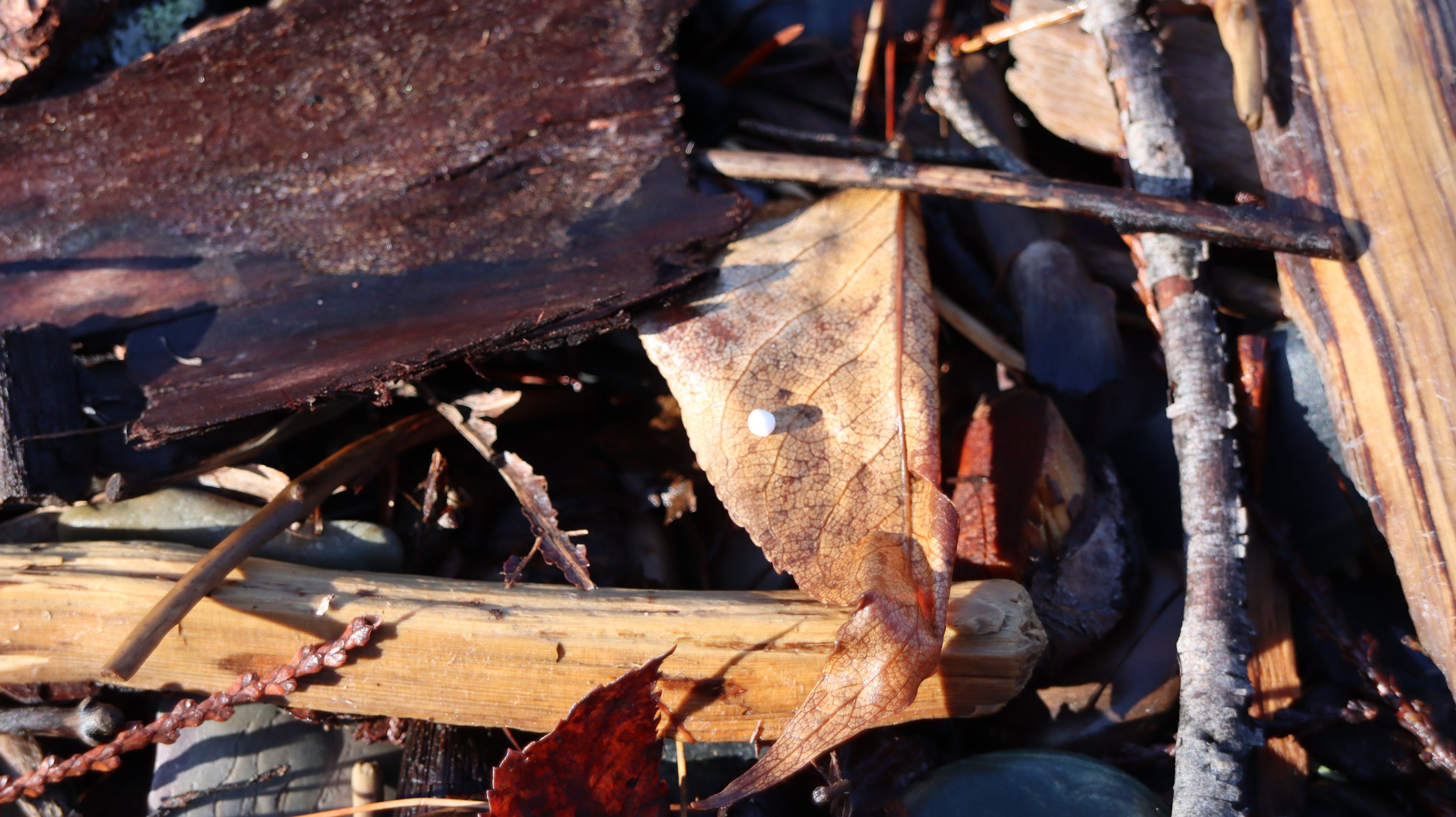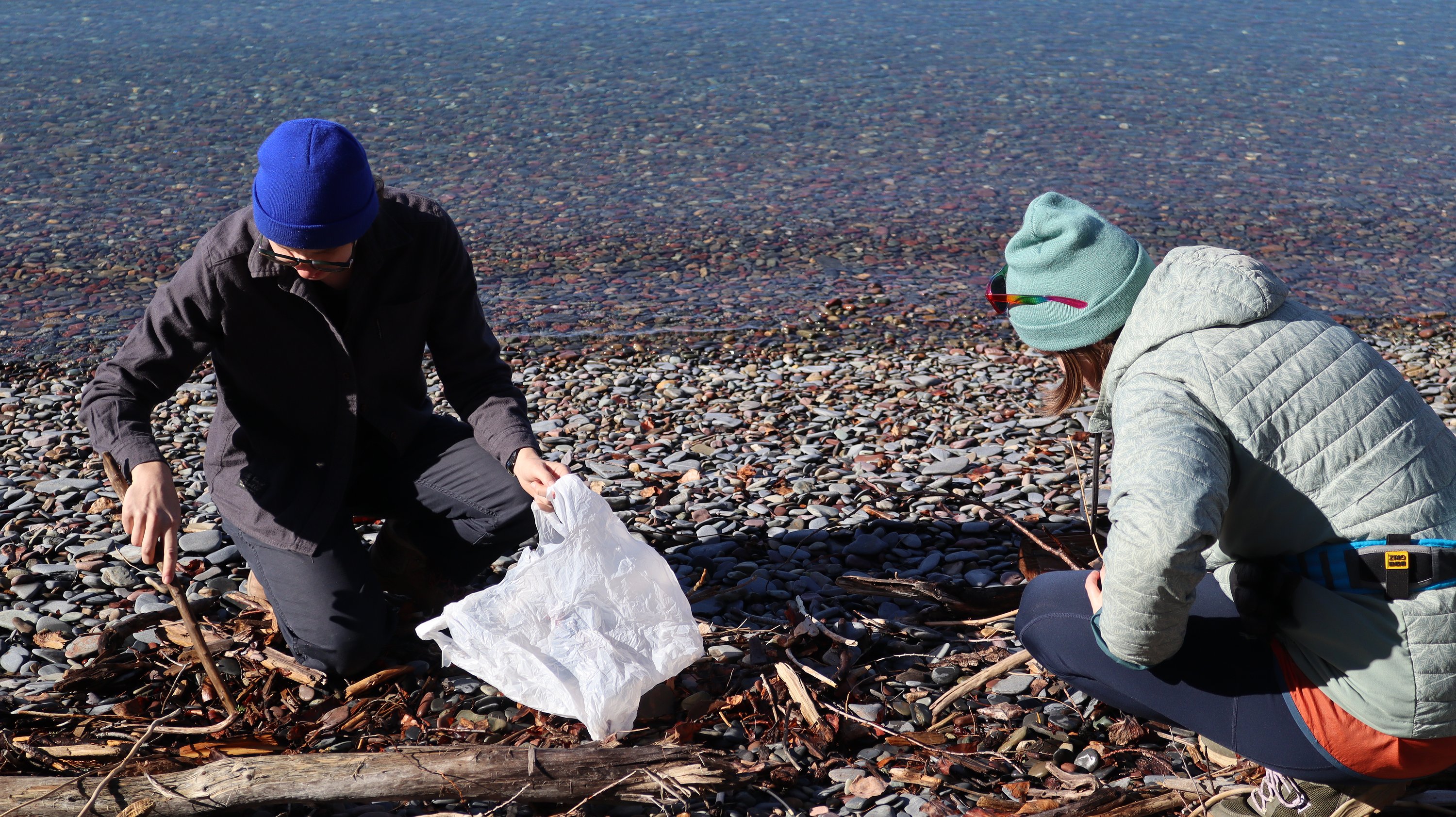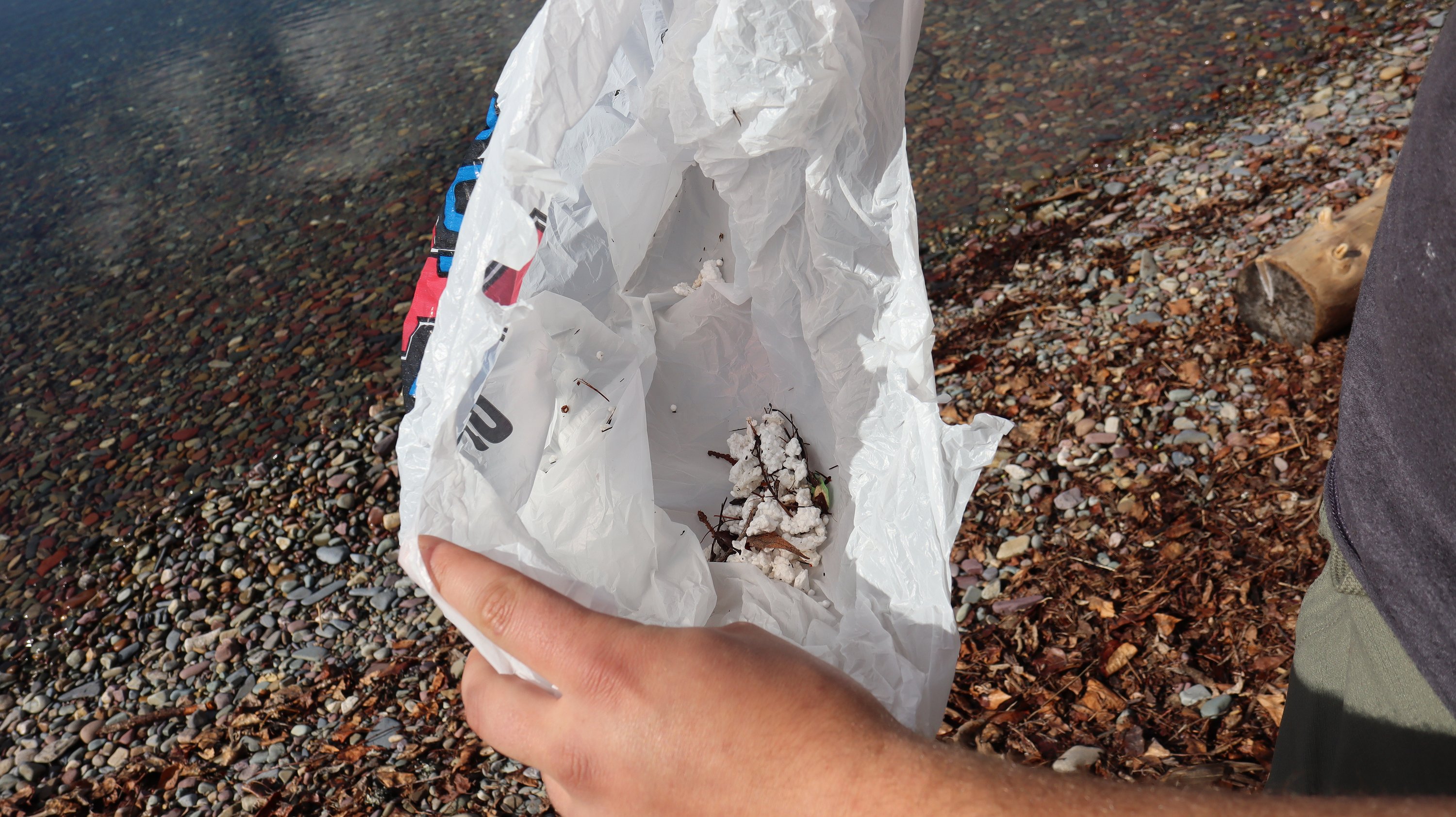Park staff and volunteers work to pick up polystyrene foam along Lake McDonald’s shores
Walking along Lake McDonald’s northeastern shore in late December, Heidi Haugen spotted small white dots in the water line debris.
On closer inspection, the West Glacier resident saw that the dots were bits of polystyrene foam, better known by the brand name Styrofoam. Haugen began gathering the trash up, an effort so engrossing she soon realized she wouldn’t reach her intended destination that day.
“In the moment I just thought ‘Oh no, no, this is not good, where did it all come from and no way am I able to get it all myself,’” Haugen recalled.
Glacier National Park staff and volunteers organized several coordinated cleanups since the discovery of polystyrene foam in the popular and picturesque lake, and Haugen said she’s seen it scattered throughout the lake’s east and north shores.
They’ve never found pieces bigger than a quarter, which makes for tedious work. Even though it’s so widespread, Haugen would estimate that they’ve cleaned up about a five gallon bucket of polystyrene foam.
Glacier’s Citizen Science Program Manager Jami Belt said the source of the pollution remains unknown, but staff are trying to track it down. She said the substance is especially a problem when it's in or near water because animals and fish eat it.
“I mean, it looks a lot like aquatic food, so they can consume it and it fills up their digestive tract,” Belt said. “But it doesn't go anywhere, so they can starve from it or get blockages in their intestinal tract.”
The Environmental Protection Agency considers styrene, the chemical used to make the foam, to have adverse effects on the environment. According to an EPA fact sheet about the chemical, animal studies have reported effects on the central nervous system, liver, kidney, and eye and nasal irritation from inhalation exposure to styrene.
“It just keeps getting smaller and smaller, and then micro amounts still have the same issues. So that was the reason to get it out of there as soon as we could, because it just never goes anywhere as we all know,” Belt said.
Members of the Big Sky Watershed Corps spent a sunny Earth Day picking up little bits of the foam along the lake’s north shore. A debris line along the beach, left from when the water had risen and retreated, revealed tiny clumps of white scattered throughout leaves and sticks. Corp members knelt and dug, picking up the polystyrene foam and putting it into plastic grocery bags.
Adrianna Carter is the sustainability coordinator in the park. She led fellow corps members on that day’s clean-up, advising them on ways they could find more clumps of polystyrene foam in between the piles of beach debris.
She said the first couple of cleanups were pretty similar to what the group saw on Earth Day, adding that they keep finding more bits of foam when they revisit the same areas.
The coordinated cleanups would help remove as much of the polystyrene foam as possible, she said.
“I'm glad we're out here doing it … But, it's just sad, because if you keep going, you find tinier and tinier [pieces]. The fish are going to end up eating that and dying or maybe some ungulates will come down to the beach and could eat it,” Carter said. “Also, I just really want to know where it came from. Like, why is this all over the place?”
Cleanup volunteer Erica Salo said as she looked out over a glass-like Lake McDonald, she felt sad that there was so much polystyrene foam in such a beautiful place.
“It's leaving its mark on the land for sure,” Salo said.
It was a sentiment shared by fellow volunteer Ellen Sears, who said she encouraged visitors to pick up trash of any kind when they see it.
“You are in a place of immense beauty. And to help clean up, it's such a small thing to be doing while surrounded by this gorgeous view,” Sears said.
Belt would like to see people get behind largely phasing out polystyrene foam from daily life. She said when people do use it, they need to be careful with the storage and handling of it.
“So for example, if it was like somebody's styrofoam cooler, although we have enough material now to think it was something more substantial than that,” Belt said, referring to an early theory developed to explain the polystyrene foam. “But, that kind of stuff happens all the time — people lose those off their cars or their boats. So, just encouraging people to be more careful and consider the impacts on wildlife when they use materials like that.”
Haugen said wherever the wave of polystyrene foam came from, there’s no hard feelings, but it’s difficult to see Lake McDonald’s pristine shores dotted with the bits of foam. She hopes visitors take it upon themselves to pick up pieces of trash whenever they come across it in the park.
“It’s the responsibility of all of us who love Glacier to work together to protect the land and water and the wildlife who call it home,” Haugen said.
Carter said in addition to the Big Sky Watershed Corps, members of the Glacier National Park Volunteer Association and staff with the Glacier National Park Conservancy have aided in their cleanup efforts.
To learn more about Leave No Trace principles, visit Glacier National Park’s website www.nps.gov/glac/planyourvisit/leavenotrace.htm/.
Reporter Taylor Inman can be reached at 406-758-4433 or by emailing tinman@dailyinterlake.com.












